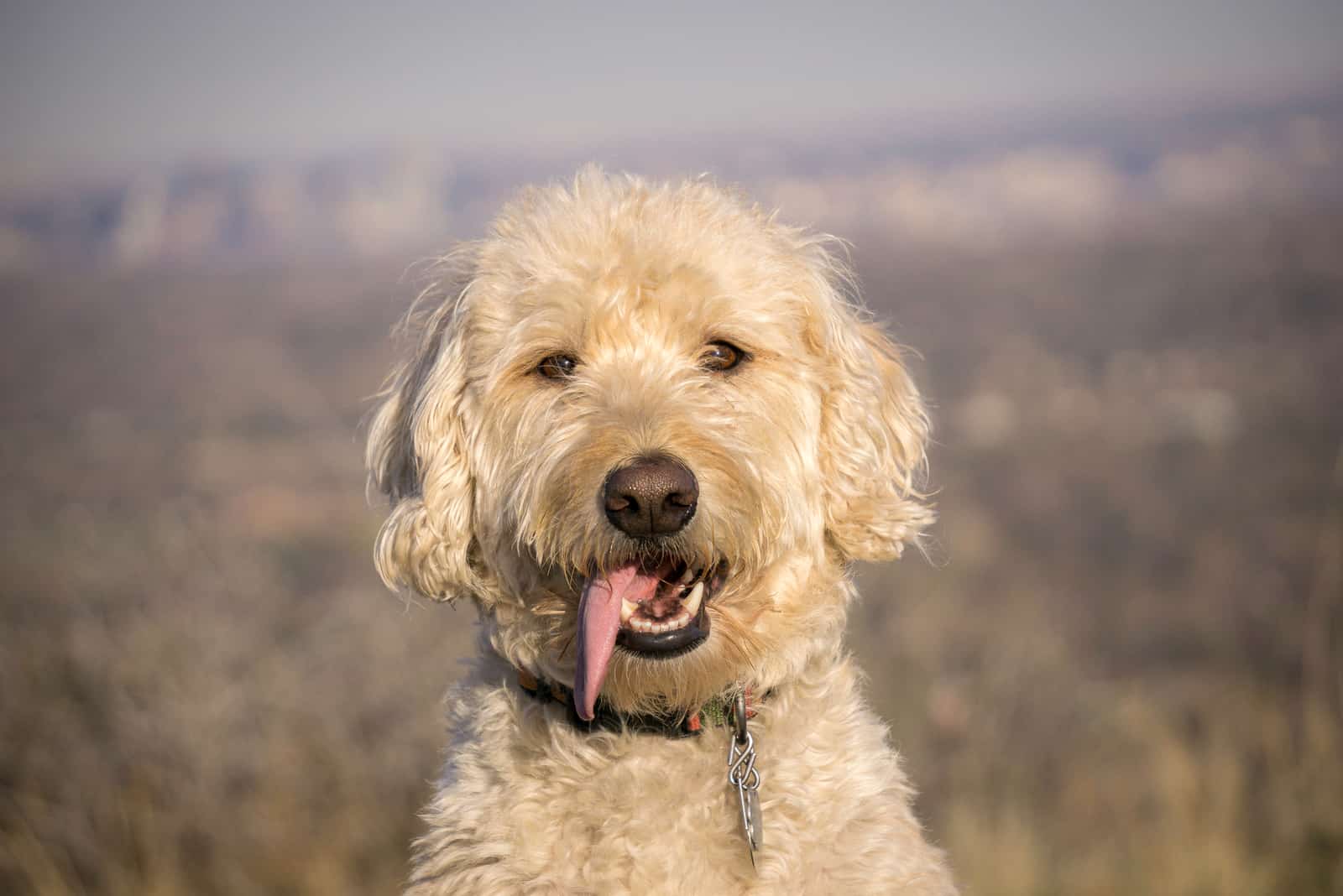Doodles are poster dogs for mixed breeds. There is no designer dog better known than those adorable toy mixes!
Labradoodles are among the oldest Poodle mixes (also known as Doodles) out there. The crossbreed of a hypoallergenic Poodle with a friendly, people-pleasing Labradoodle can go no wrong.
However, when looking for Labradoodles online (or any other mix, such as Goldendoodles, Bernedoodles, or Cockapoos), you might have noticed those weird letters and numbers before a Labradoodle. F1 Labradoodle, F3 Labradoodle, F1B Labradoodle – there are so many it’s easy to lose track!
Even I have found this rather confusing at first, thinking the labels were there to indicate some specific pattern or a breeding program.
However, if you’re looking to become a Labradoodle owner, understanding these labels can help you find the best dog for yourself.
Not all Labradoodles are alike, and by learning more about these labels you can discover just how fascinating Poodle mixes can be.
For example, I personally think that F1B Labradoodles are the best Labradoodles out there! But why?
Let’s solve the mystery!
What Is The F1B Labradoodle?
Labradoodles are Doodles – crossbreeds of a purebred Poodle and a purebred Labrador Retriever. They are hybrid dogs designed to combine the best features of both Labs and Poodles.
An F1B Labradoodle is a first generation Labradoodle backcross. In other words, this is a Labradoodle whose one parent is a Labradoodle, and the other one is one of the two parent breeds.
There are many reasons why someone would create a Doodle backcross. Before we get into that, though, it’s time to learn precisely what does that F1B in an F1B Labradoodle indicate.
Labradoodle Generations
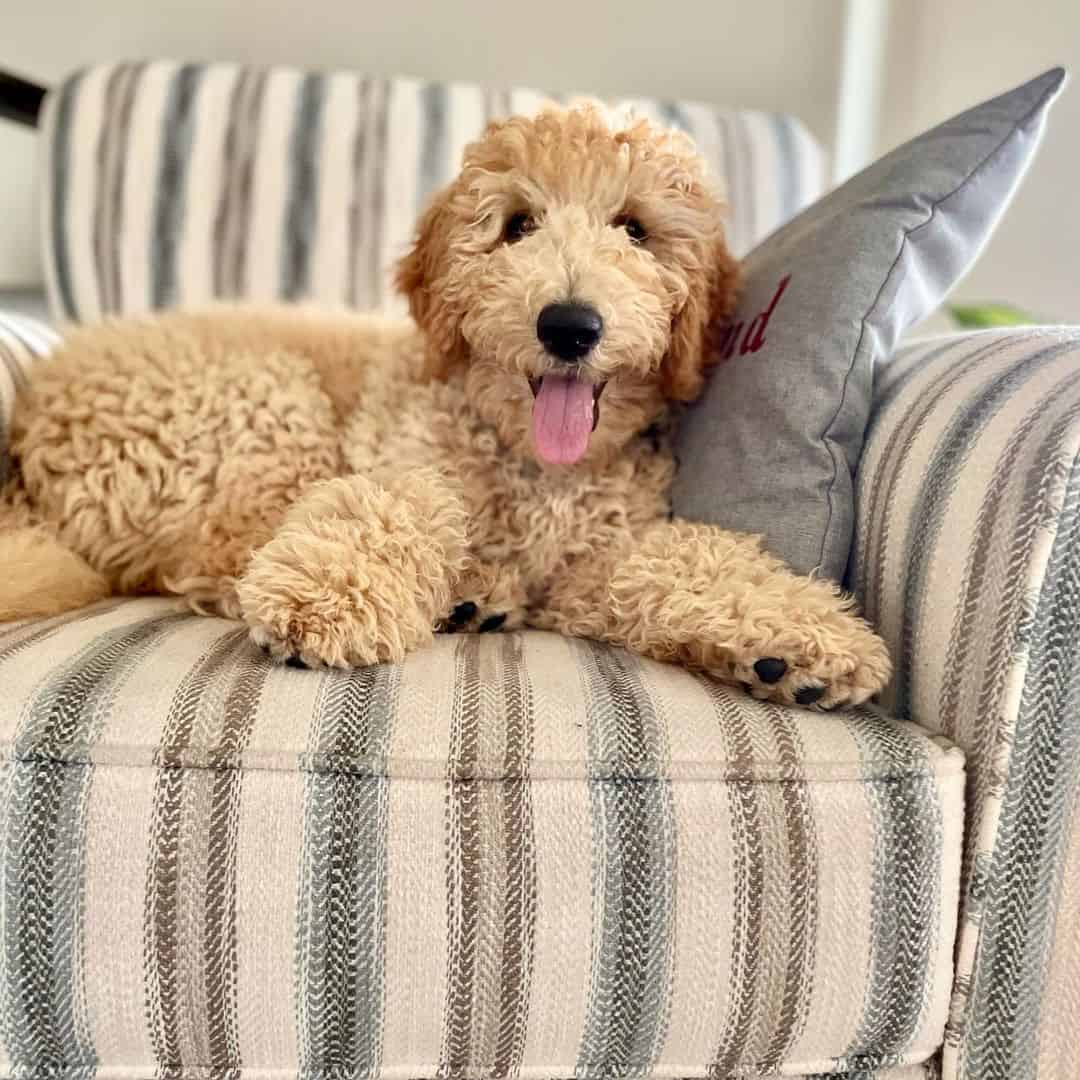
Photo from: @steviethecovidpuppy
The F1, F2, F3, or even F1B that the crossbreeds are referred to is a universal way of distinguishing various generations of dogs.
In fact, the same type of labeling is used not just in dogs, but in cats, plants, as well as any other living organism, including single cells.
You also have a P generation, which simply indicates that a dog is purebred. For example, all purebred Poodles will be P Poodles, no matter for how many generations and using what breeding programs you’ve bred them.
You’ll rarely see the letter P being used, though. There are many other ways to label a purebred dog, which is why this type of naming is almost never used.
For Labradoodles and other mixed dog breeds, however, the Fx labels are very important, as knowing a Labradoodle generation can be essential in choosing the right family dog for you.
Here’s what they mean:
F1 Labradoodles
F1 Labradoodles are the first generation of a Poodle x Labrador mix. In other words, they are 50% Labradors and 50% Poodles.
This doesn’t necessarily mean that they’ll look like half Labradors half Poodles. The genes can express themselves in various ways. This is why it’s almost impossible to predict what a mixed breed dog will look like.
Even though a dog will have 50% Labrador and 50% Poodle genes, not all genes will express themselves. It isn’t uncommon to get an F1 Labradoodle that will look almost entirely like a Poodle!
Most people think that F1 Labradoodles are a true generation of Doodles, but this isn’t the case – even though many breeders will focus solely on the first generation of puppies.
The problem with F1 Labradoodles is that you cannot truly predict their features. This is why they might not be an ideal choice for people looking for Labradoodles because of a specific trait the breed is supposed to have.
F2 Labradoodles
F2 Labradoodles are still 50% Poodles and 50% Labradoodles. However, their parents are not purebred dogs, but two F1 Labradoodles. Because of this, they are known as a second generation.
While it seems like producing F2 Labradoodles is a logical turn of events, the truth is, this generation is even more unpredictable than F1!
This is because both parent dogs have a large number of hidden genes that never got expressed, but can get passed on to the offspring.
As such, you might end up with a litter of puppies that will look nothing like their parents!
Because of this, most reputable breeders will refuse to breed F2 Labradoodles. There is nothing wrong with these dogs – but there is no way of knowing how a dog will look or behave like.
F3 Labradoodles / Multi-Generation Labradoodles
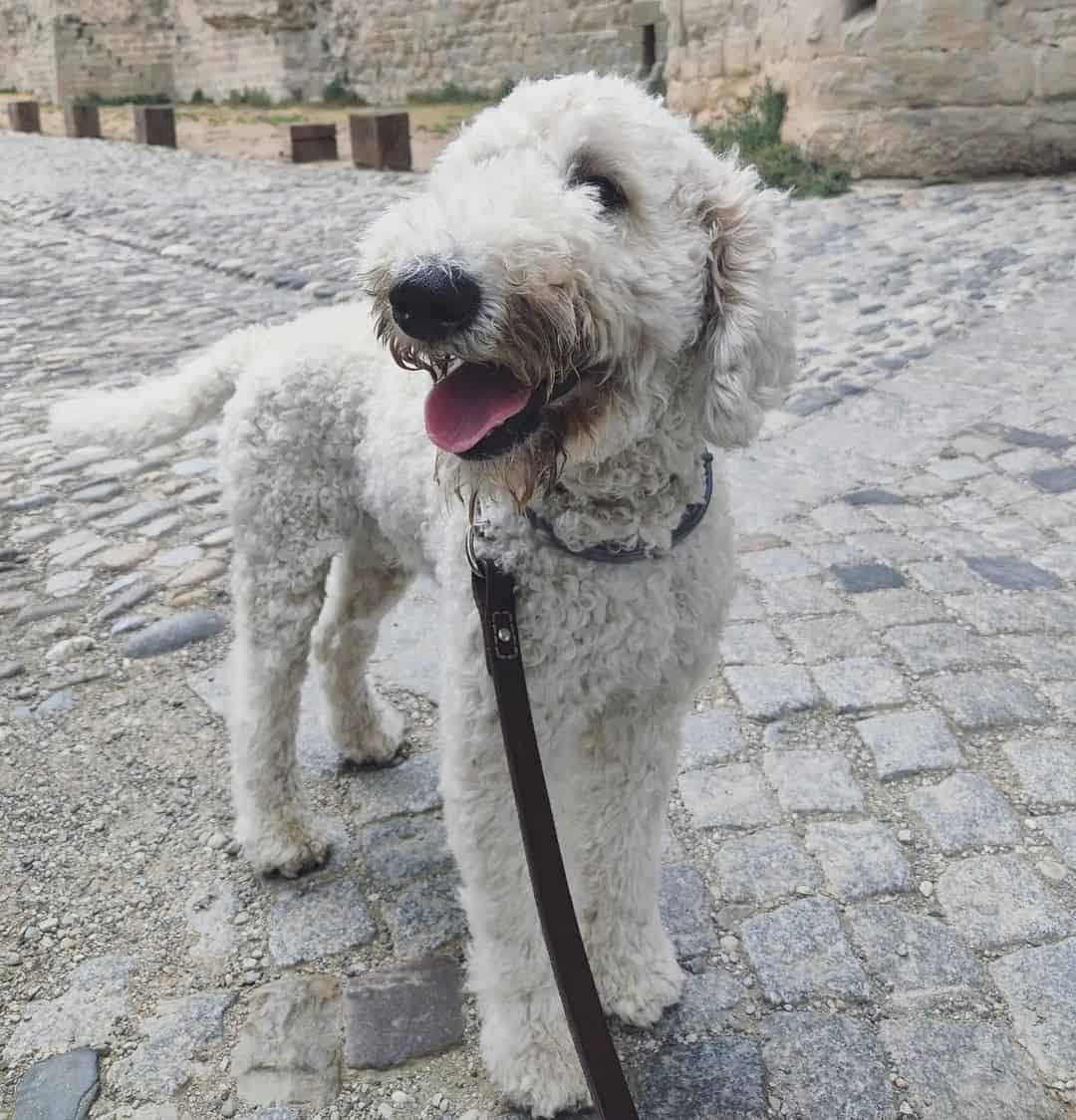
Photo from: @balou.pierre_the.bear
F3 Labradoodles, as well as F4, F5, and other generations, are known as multi-generation Labradoodles. They are a result of breeding two second-generation Labradoodles or Labradoodles of any generation larger than F1.
While technically multi-generations are still 50% Poodles and 50% Labradors, they’ll look less and less like their purebred parents as the generations increase.
They are still somewhat unpredictable, as there are many recessive genes that come into play. However, these differences will be less noticeable than in F2 generations, as the genes and the gene pool is becoming more stable.
The reason why not many breeders are breeding multi-gen Labradoodles is that they are expensive to get. You’ll need two F2 or older generation Labradoodles with fairly similar features, which means you’ll likely spend a lot of time searching.
Not just that, but knowing the bloodlines of these dogs can be a bit challenging, which means they won’t know for sure the bloodline of a, for example, F4 Labradoodle. The only way for a breeder to know who the ancestors are is to start breeding Labradoodles from F1, and this can take years.
Finally, multi-generation Labradoodles might lose their hybrid vigor, a desirable trait that I’ll talk about later on.
F1B Labradoodles
Finally, we’re getting to our F1B Labradoodles. These dogs are what is known as first-generation backcross -hence the label F1B(ackcross).
In other words, this is an F1 Labradoodle bred with one of their purebred parent breeds. In the case of Labradoodles (and all other Doodles), the purebred breed will usually be a Poodle.
This means that a standard F1B Labradoodle is 75% Poodle and a 25% Labrador Retriever.
F1B Labradoodles are, according to experts, some of the most desirable Doodles out there. This is because they are fairly predictable and they’ll keep most of the Poodle traits that people want, such as a low-shedding coat, while keeping enough Labradoodle traits not to look like purebred Poodles.
Backrosses allow breeders to intensify certain traits in crossbreeds and to ensure the litter is more stable. Sure, some surprises are always possible, but there will be less of them than in ‘standard’ generations.
F2B Labradoodles
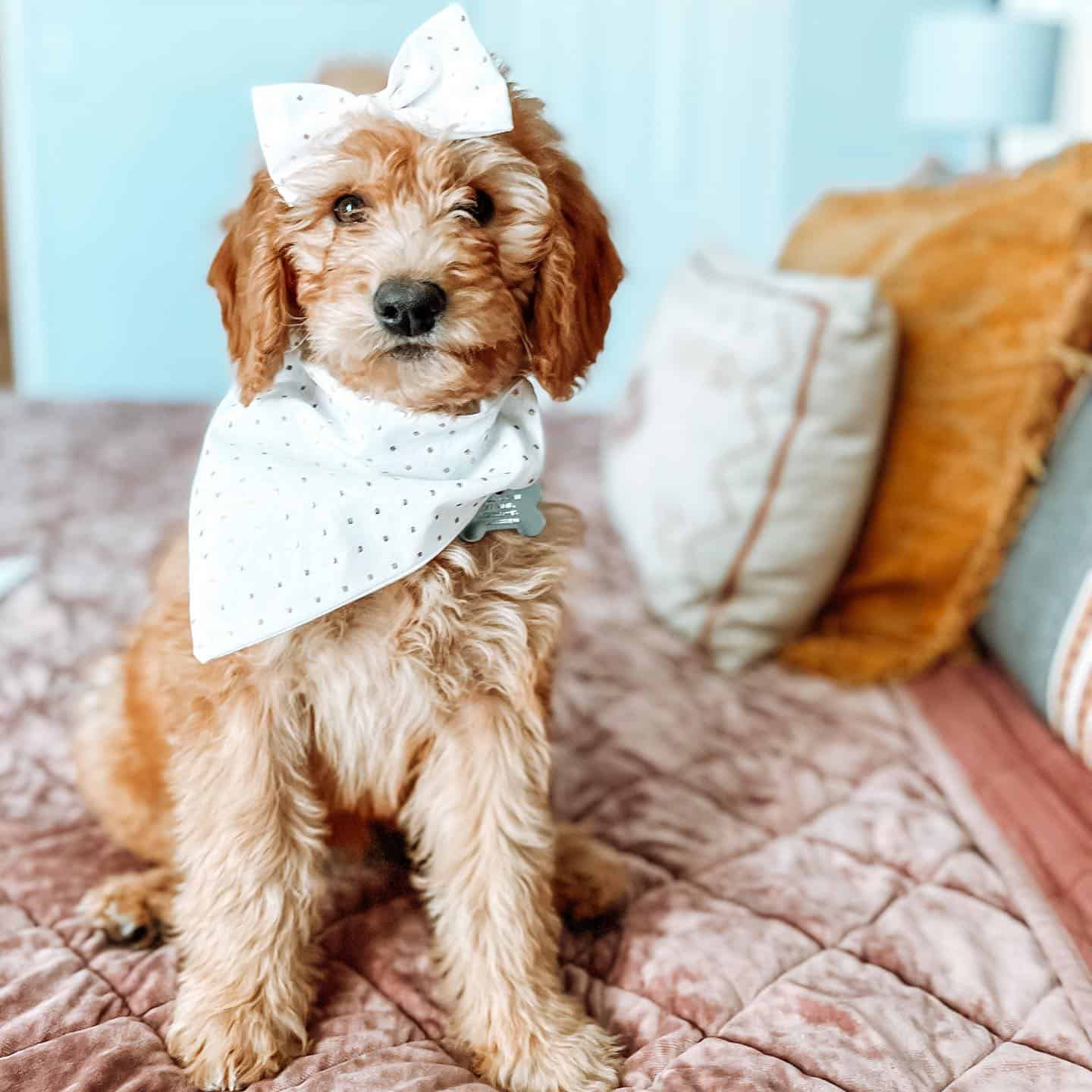
Photo from: @the.berry.acres
F2B Labradoodles are second-generation backcrossed pups.
No, this isn’t as simple as backcrossing an F2 Labradoodle. Almost no breeder will do this, as the unstableness of a second-generation Labradoodle will annul the breeder’s ability to predict the litter’s appearance.
Instead, this is a generation you’ll get when you breed an F1 Labradoodle with an F1B Labradoodle. It is a good way to add a bit more Labradoodle genes into the mix without going overboard.
As such, F2B Labradoodles will be 62.5% Poodles and 37.5% Labrador Retrievers.
This generation will still keep a significant amount of Poodle genes, but the puppies will still look more like Labradoodles than purebred Poodles.
Some breeders consider F2B Labradoodles to be multi-generation, as they are the third offspring generation.
You might also combine two F1B Labradoodles to get an F2B Labradoodle, but this isn’t a common practice.
F1BB Labradoodles
To get F1BB Labradoodles, you need to combine an F1B Labradoodle with a purebred parent (once again, this will usually be a Poodle).
This makes F1BB Labradoodles a backcross of a backcross. In other words, these dogs are 87.5% Poodles and 12.5% Labradors.
F1BB Labradoodles are commonly used with mini Labradoodles or micro Labradoodles, as they are a new influx of miniature Poodle genes.
Not just that, but F1BB Labradoodles are great for people who want dogs with more Poodle than Labrador genes. However, many will look almost entirely the same as Poodles, which can be a downside if you truly love Labradoodles for their uniqueness.
F2BB Labradoodles
F2BB Labradoodles are the last Labradoodle generation I’ll mention. These dogs are a crossbreed of a purebred Poodle and an F2B Labradoodle.
This crossbreed is very similar to F1BB Labradoodles, as it also contains a large amount of Poodle genes – but a tiny bit less than the F1BB ones.
These dogs can be very challenging to get by as they are technically the fourth generation of Labradoodles, meaning it takes a lot of time and effort to reach this generation.
F2BB Labradoodles are an amazing choice for allergy sufferers looking for hypoallergenic dogs, but they still too much like Poodles, which can be considered a flaw by some.
F1B Labradoodle Puppies
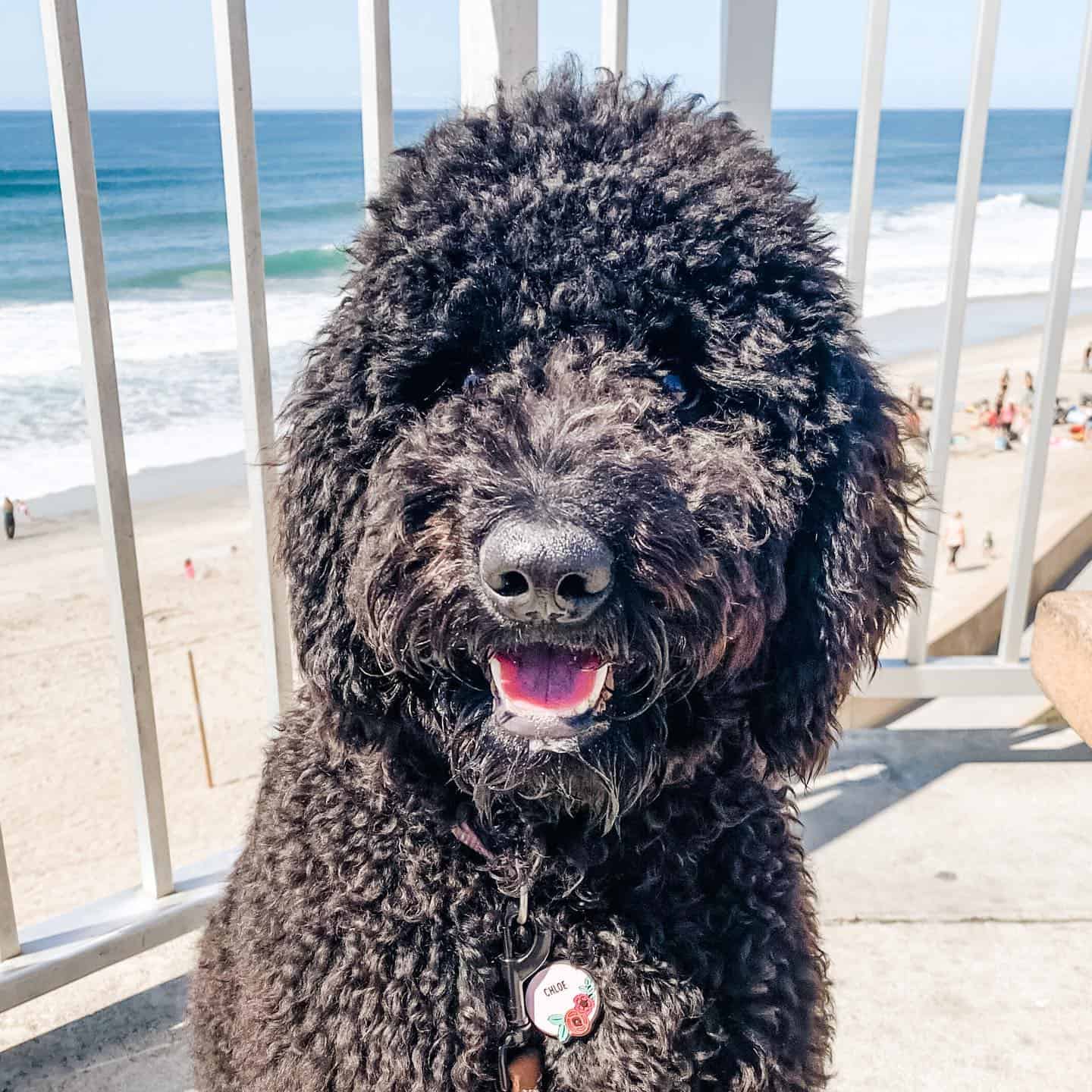
Photo from: @mon.cheri.chloe
As we’ve mentioned, to get an F1B Labradoodle puppy, you’ll need to breed an F1 Labradoodle with a pure Poodle. This is done to create offspring with curlier hair and a hypoallergenic coat.
By adding more Poodle genes to the mix, you’ll get a puppy with a low amount of shedding, but with all the good traits of a Labrador Retriever, such as an active yet friendly personality.
Still, while they are puppies, F1B Labradoodles will look more or less the same as most Doodles. Goldendoodle and Labradoodle puppies especially look very much alike.
The main quality to look at even while they are still very young is their curly coat.
Labradoodles can come in a straight or wavy coat, but curly hair is what they are mostly prized for – and, fortunately, this is the main hair texture they’ll have.
When choosing a puppy, try to get an active dog but not a pooch that is bullying others. Also, don’t go for the shyest dogs. Both might indicate some behavioral problems.
Of course, all Labradoodle puppies will make great pets with amazing personalities, but you should always strive to get the best of any dog breed.
Full Grown F1B Labradoodle
Once an F1B Labradoodle is full-grown, you’ll be able to notice the dog’s characteristics.
Other than the dog’s non-shedding coat, which we’ll talk about in a minute, you’ll recognize these dogs by their beady, black eyes, button-like nose, and an eternal smile on their face.
These pups usually come in golden, apricot, or chocolate coat colors, but as Poodles are a rather colorful breed, you can find them in almost any
In fact, these pups do resemble Poodles much more than Labrador Retrievers due to a large amount of Poodle genes. Still, they’ll have some typical Doodle characteristics, such as a rounded muzzle and a bulkier, more teddy-bear-like stature.
F1B Labradoodle Size
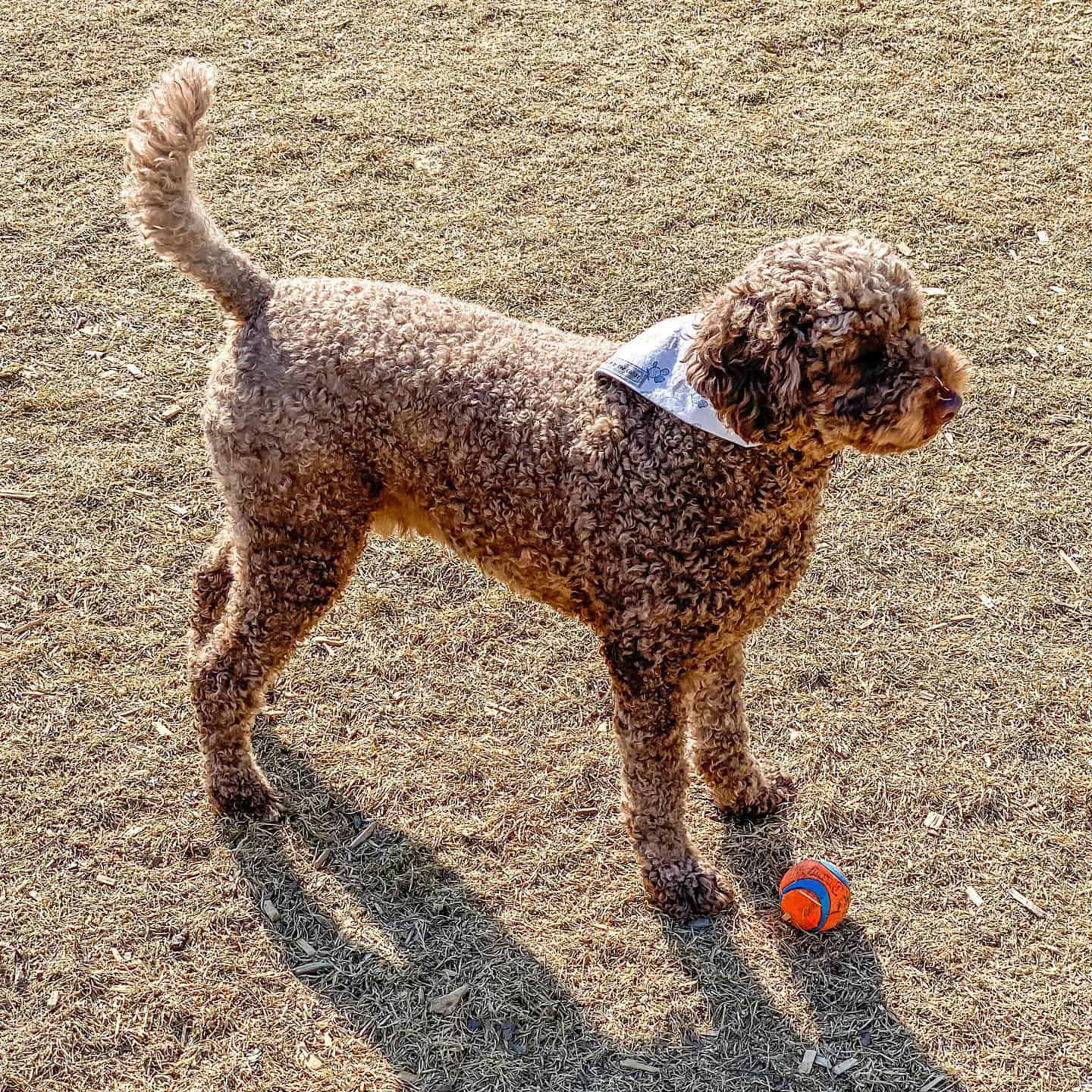
Photo from: @wheregoslinggoes
F1B Labradoodles can come in three sizes:
• Standard Labradoodles.
• Medium Labradoodles.
• Miniature Labradoodles.
Compared to first and second-generation Labradoodles, these dogs can vary in size quite a bit. This is because they have so much Poodle in them, so they can vary in size a lot more.
Labrador Retrievers come in one size only. They are medium to large dogs, and there are not too many variations.
With Poodles, on the other hand, there are many shapes and sizes. Most kennel clubs, including the American Kennel Club (AKC), would agree on three sizes:
• Standard Poodle.
• Miniature Poodle.
• Toy Poodle.
In the case of F1 Labradoodles, the size can vary but the chances are greater than not that you’ll get either a standard or a medium Labradoodle. With F1B Labradoodles, you can combine medium Labradoodles with toy or miniature Poodles to get a mini Labradoodle – something that is otherwise challenging to achieve.
Before I give you a size overview, it’s important to note this: No major kennel club will recognize any crossbreed, including Labradoodles. As such, there is no breed standard that will regulate the allowed size for a dog.
What I’m basing the measurements and sizes on are the owner’s and breeder’s experiences, as well as some basic regulations set by the Australian Labradoodle Association of America (ALAA).
Now that we’ve explained that, here are the three standard F1B Labradoodle sizes:
Standard F1B Labradoodle
Standard F1B Labradoodles are very easy to find. They are a result of crossbreeding a standard F1 Labradoodle with a Standard Poodle parent.
The height of a Labradoodle is always somewhere between its parents.
The Labrador has a height of up to 24.5 inches and weighs between 65 and 80 lbs.
On the other hand, Standard Poodles have a height of 20-22 inches (although some can reach an incredible height of 28 inches!) and weigh 45 to 80 lbs.
This means that a standard size of an F1 Labradoodle is usually 20-24.5 inches in height, with a weight of 45 to 80 lbs.
As this size is fairly similar to a standard Poodle height, once you match an F1B Labradoodle with another standard Poodle, there shouldn’t be too many discrepancies in size.
This dog should have a height of 20-24.5 inches, and a weight of around 80 lbs.
Medium F1B Labradoodle
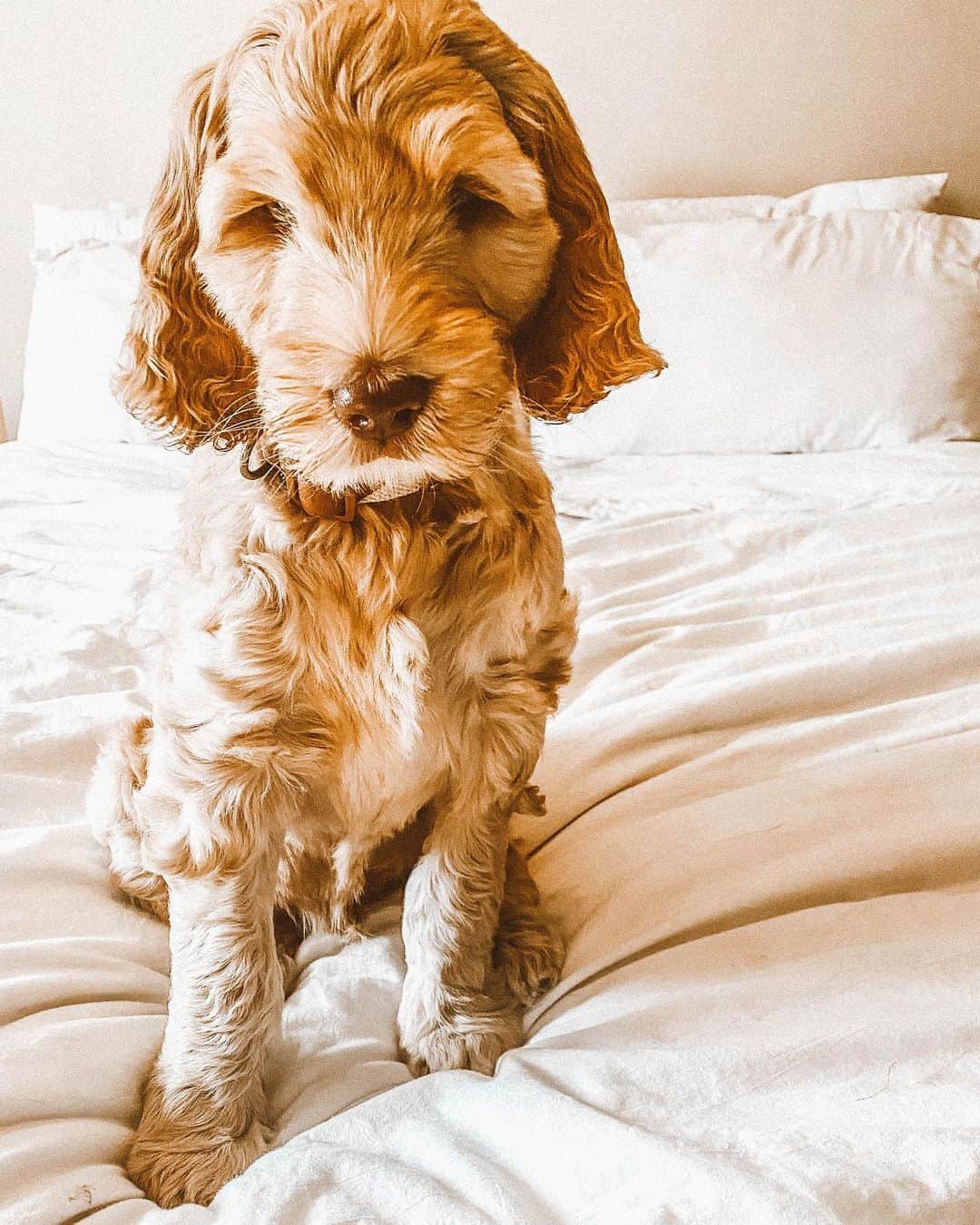
Photo from: @a.dood.named.arthur
With medium F1B Labradoodles, the size can already vary a bit. This is because there is a size difference between a Miniature Poodle and a Labrador Retriever, so the puppy might not always come in the height you anticipate.
In general, the Medium F1 Labradoodle should have a height of 17 to 20 inches. In theory, this size can vary between 10 and 24.5 inches, but dogs that don’t fall within this size standard usually won’t make it into the further breeding program.
When making a backcross, you’d want a dog to stay within this range. As such, if your F1 Labradoodle is a bit taller or heavier than it should be, a breeder will further breed it with a Miniature Poodle. This will increase the chances of creating smaller offspring.
Opposite of that, if the dog is already on the smaller size, you’ll add Standard Poodle genes to the mix to ensure they grow a bit taller.
Overall, a Medium F1B Labradoodle should have a height of 17 to 20 inches, and a weight of 50 to 65 lbs.
Mini F1B Labradoodle
Most Mini Labradoodles you see on the market are F1B or even F2B Labradoodles. This is because a breeder has a great chance of correcting the dog’s size and making it fall within a certain range.
Mini F1B Labradoodles are the result of crossbreeding a Mini F1 Labradoodle with a Toy Poodle. This allows the breeders to have a dog of the smallest size possible.
Still, F1B Labradoodles won’t come in toy size. This is because the Labrador genes keep it from being too tiny.
As such, if you see an F1B Labradoodle being advertised as a Toy Labradoodle, you should know that this is usually either a runt of a litter, a dog with dwarfism or some other health condition, or a crossbreed with another, even smaller dog.
The standard size for Mini F1B Labradoodle is 14 to 16 inches in height, with a weight of 15 to 25 lbs.
You can find out more about this dog’s size in our Labradoodle growth chart.
F1B Labradoodle Coat Types
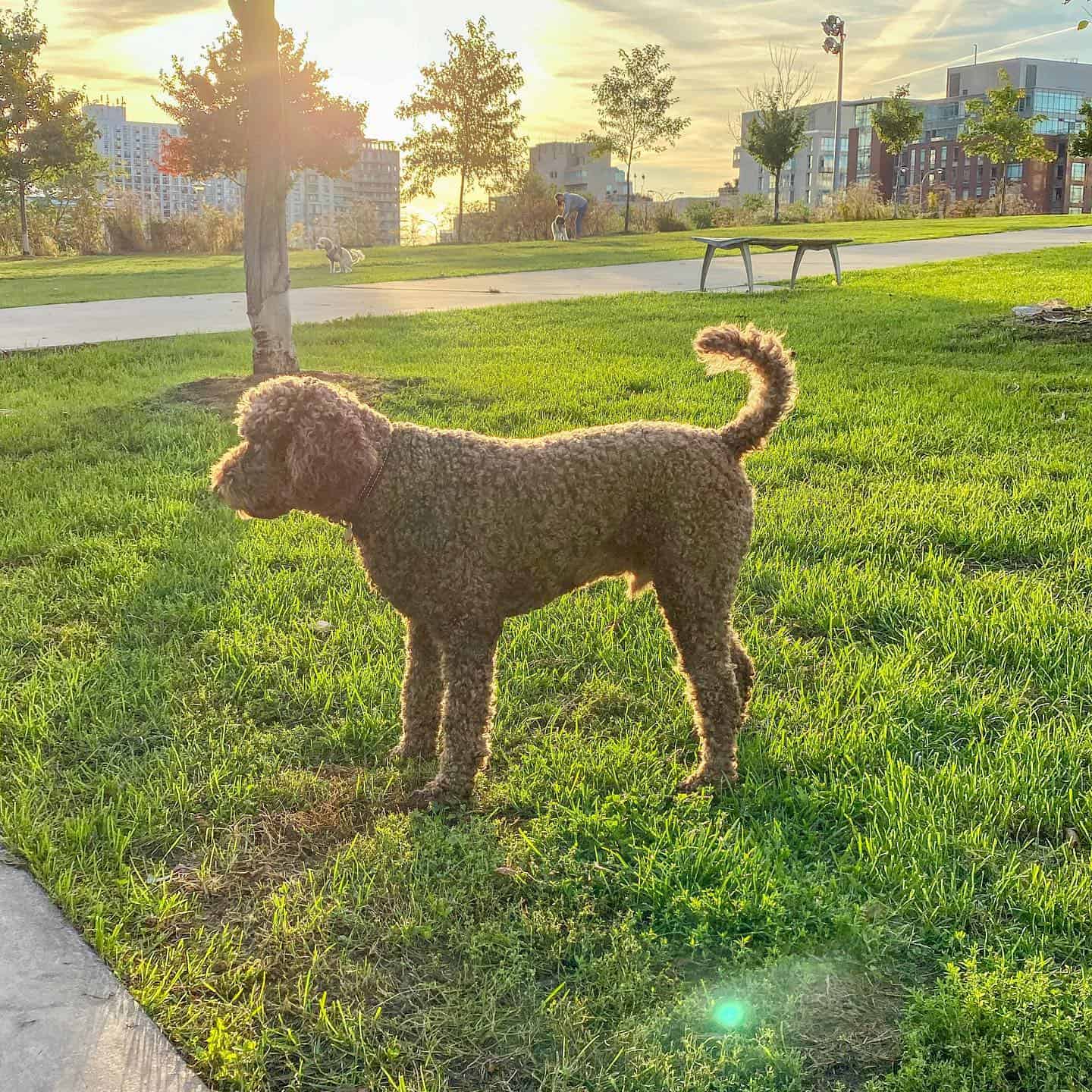
Photo from: @wheregoslinggoes
Labradoodles can have a straight, wavy, or curly coat. Also, their coat can be divided into three other categories:
• Wool.
• Fleece.
• Hair.
Wool is the desired coat type in Labradoodles. It resembles the Poodle’s coat the most. It might feel a bit coarse to the touch, but it’s non-shedding and the best choice for people with dog allergies.
This coat comes with a tight curl, making it somewhat prone to matting. Also, it should be clipped and groomed regularly.
Fleece coat can come in straight, wavy, or curly variants. It is similar to wool when curly, but it has a soft feel to the touch. Also, when it’s wavy or straight, some mild shedding is possible.
This coat requires regular grooming, especially if it’s on the curlier side.
Finally, you have hair. This type of coat is called that way because it has properties that make it resemble the hair on the human’s head.
Most of the time, the hair type will have a wiry feel, and this is the most shedding of all coat types. As such, it isn’t good for people with allergies.
F1B puppies rarely come with a straight coat. Instead, they’ll come with a wavy or curly one. However, all three coat types are equally possible – although wool is the one most breeders will try to get.
No matter the coat type, it might be wise to get your F1B Labradoodle to a professional groomer a few times a year. This will ensure these pups look their best, and that their coats are free of tangles.
As Labradoodles are very similar to Goldendoodles, you might even give them the same haircut!
F1B Labradoodle Shedding
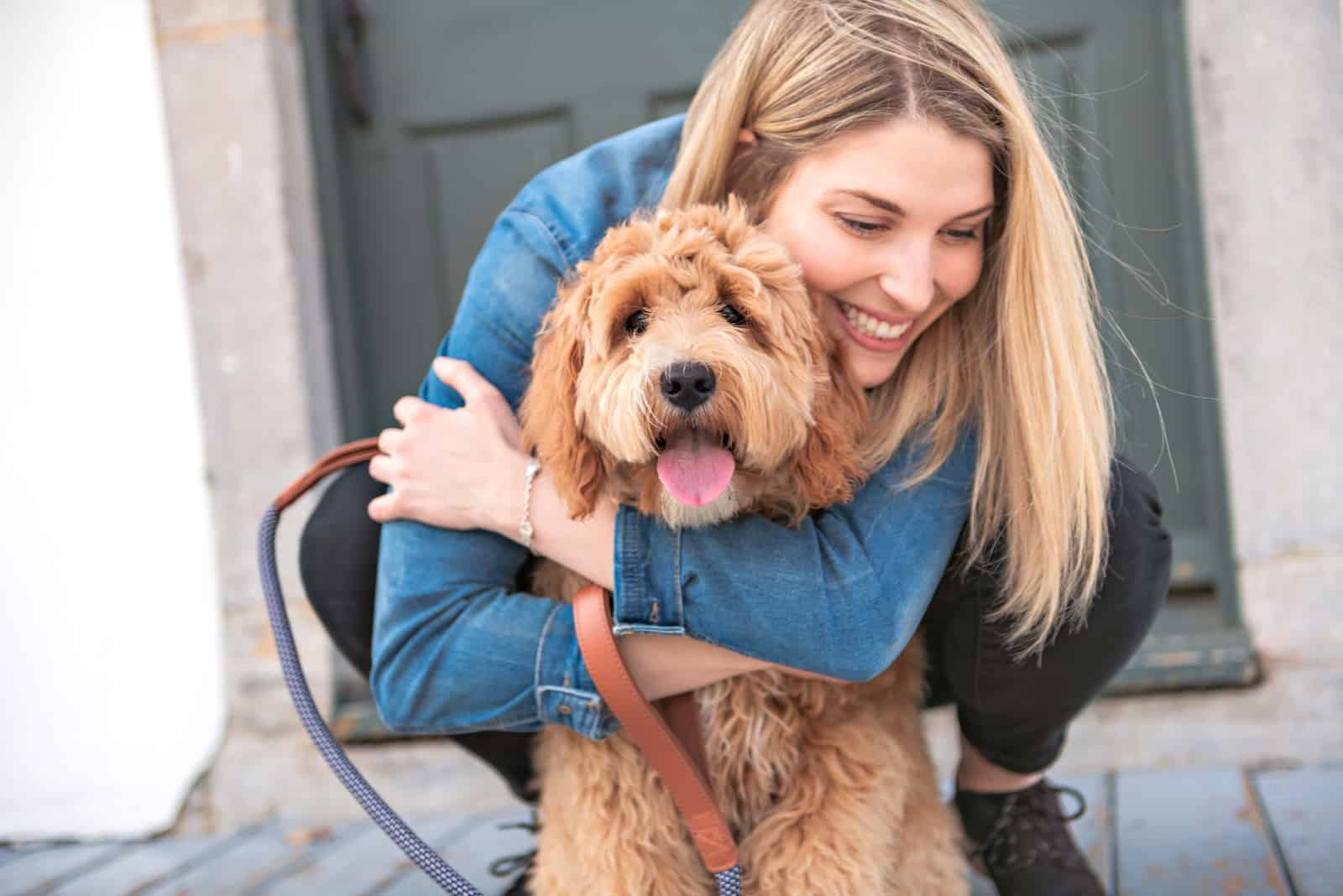
In general, Labradoodles are advertised as having a non-shedding coat that is great for allergy sufferers. However, with all Poodle mixes, this is a bit of a lottery.
Labradors are known for being huge shedders. They’ll leave loose hairs everywhere! While they have a short coat, they also have a thick undercoat, which will lead to a severe amount of shedding.
Not just that, but they are seasonal shedders. Their shedding amount will further increase two times a year, in spring and fall, when they’ll be blowing their coats.
On the other hand, Poodles are known for being a non-shedding breed. If you’re looking for an allergy-friendly dog, Poodles are the best choice!
They have longer coats than Labrador Retrievers, but due to their curls, the dead hairs won’t fly away. Instead, they’ll be stuck to the locks and wait until you comb them.
Unfortunately, this also means they are prone to matting and tangles, so you’ll need to groom them regularly. This is why many people choose to give Poodles the haircuts these cute dogs are known for.
How much a Labradoodle will shed depends entirely on its individual genetics. If it has a Poodle-type coat, then the shedding amount will be minimal to non-existent. On the other hand, if it has picked the genetics from its Labrador parent, you can expect a moderate shedding amount.
Luckily, F1B Labradoodles are likely the best generation of Labradoodles if you’re trying to get a dog that doesn’t shed. This is because of the large amount of Poodle genetics these dogs have.
F1B Labradoodles are much more likely to have a curly coat that doesn’t shed compared to all other Labradoodle generations. Of course, there are always exceptions, so don’t take my word for it.
Even if you happen to have an F1B Labradoodle that sheds, the amount of shedding should be easy to take care of. These pups won’t leave too many loose hairs and are generally very tidy.
Overall, in terms of shedding, the only thing better than an F1B Labradoodle would be a purebred Poodle itself. If shedding is something that concerns you, F1B generation is the way to go.
F1B Labradoodle Temperament
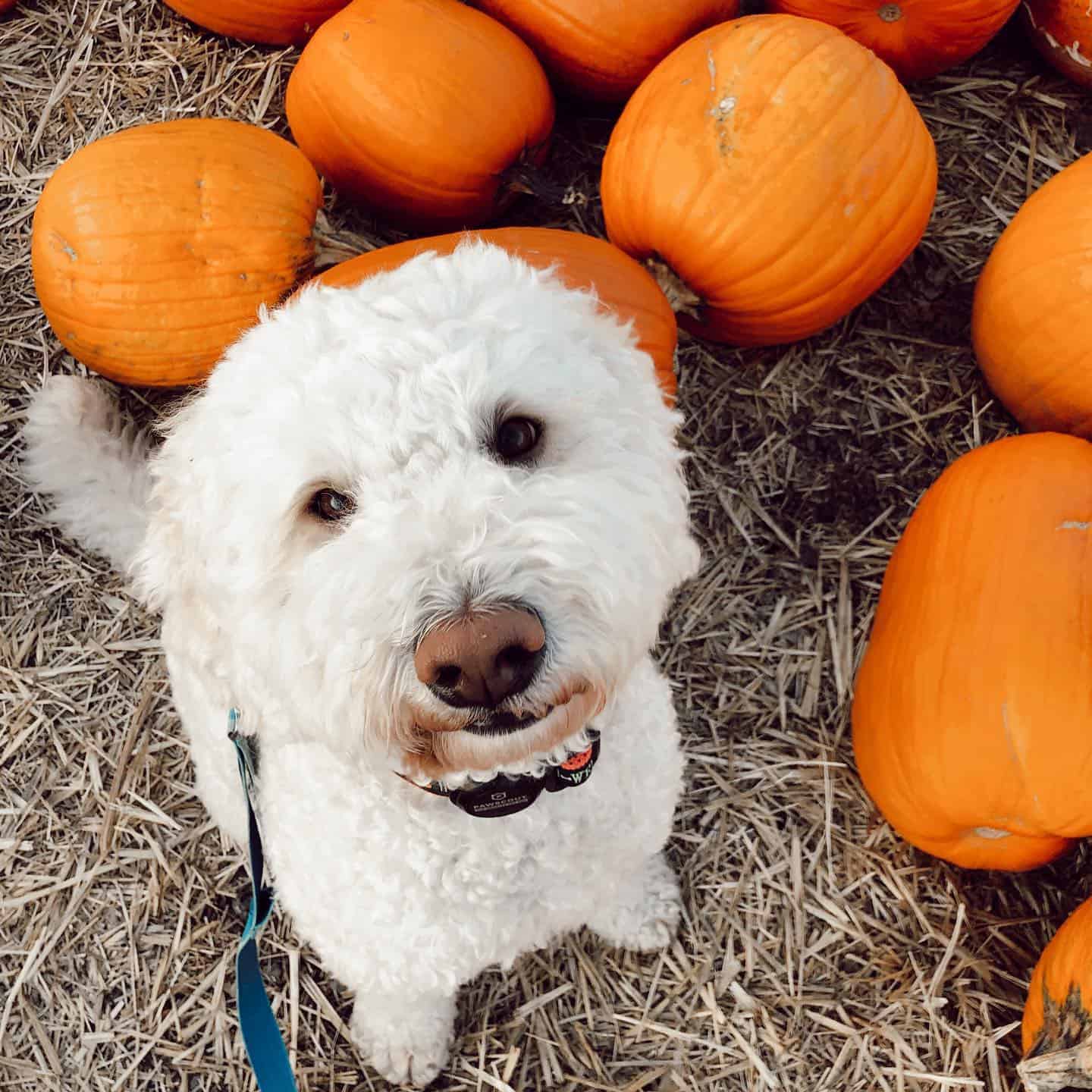
Photo from: @bennidoodle
Other than their non-shedding coats, the main reason why people have fallen in love with Labradoodles is their personality.
Both the Poodle and the Labrador are extremely social and cheerful dogs, and this is something that is easy to notice in their offspring.
F1B Labradoodles are outgoing dogs that might remind you of a small child in their goofiness. They are playful, always busy doing things, and very curious about everything around them.
They are ideal for first-time owners as they are laid-back and easy to take care of. While they do require some minimal socialization and dog training, they’ll do really well with other pets and newcomers.
In fact, they love everyone so much that they make terrible guard dogs! If an intruder comes, they are more likely to befriend them than to alert you that something is wrong or chase them away.
They are even great with small kids as they can match their playful energy really well. They’ll see children as their playtim e companions, and they’ll love having them around!
Just make sure to monitor their mutual playtime. F1B Labradoodles can be a bit mischievous at a time, and they will love rough play from time to time. While they’re anything but mean, they might knock a child over by accident or accidentally push something towards them.
These dogs are so friendly that separation anxiety is a common problem. While they can tolerate being alone for a little while, if you’re someone that spends long working hours outside of your home, this might not be a good dog for you.
Also, this is one of the most intelligent Labradoodle generations. While this means you can teach them new tricks in no time, you’ll also have to provide them with plenty of mental stimulation to avoid boredom.
If a dog is bored, he might become destructive. Even a calm and friendly dog such as an F1B Labradoodle doesn’t do well when he is bored.
Lastly, keep in mind that these dogs have a tendency to bark. They’ll be very vocal when they need something, especially if they want your attention.
Their barking habits are the main reason why you’d want to ensure they are properly trained. Even if you don’t mind your dog barking constantly, you need to teach him when to stop. Otherwise, you might get into a quarrel with your neighbors.
F1B Labradoodle Breeder
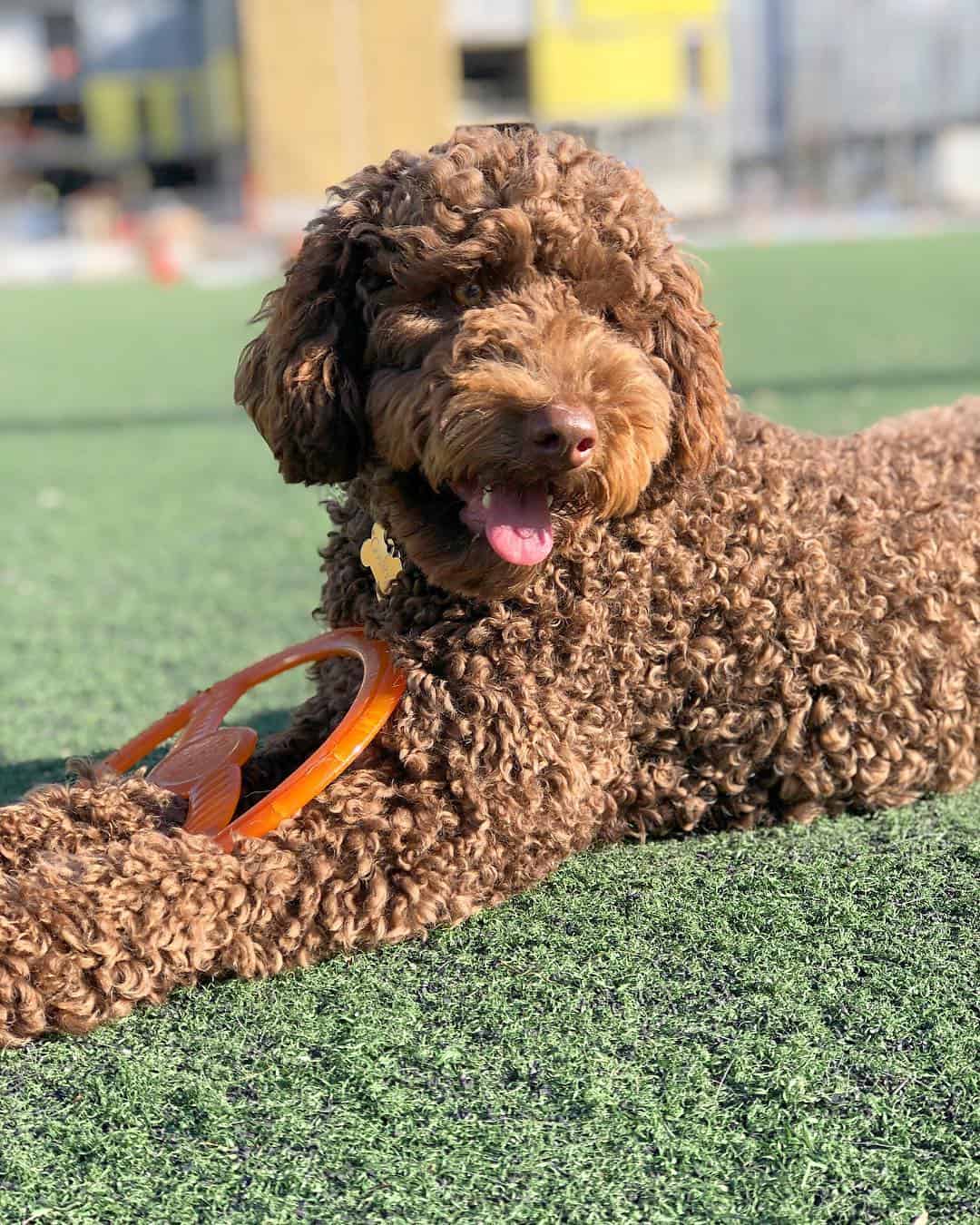
Photo from: @wheregoslinggoes
When looking for F1B Labradoodle puppies for sale, you need to make sure you are buying them from a good breeder.
Labradoodles can be found on websites such as Craigslist. However, the breeders who sell their dogs on such websites usually aren’t certified, which is how they are able to keep their prices fairly low.
Also, you can find Labradoodles in pet shops. However, pet shops import their dogs from puppy mills, and I would never advise anyone to buy a single pup from these locations.
Instead, you need to find a breeder specialized in producing mixed breed dogs.
Such a breeder will know how to properly treat their dogs and parents. Also, they’ll be honest about the generations of Labradoodles they’re producing, so you can be certain you’re getting the F1B Labradoodle you want.
They’ll also make sure their dogs don’t fall into the wrong hands, and they’ll be there in case you ever need a helping hand in raising your pup the right way.
Most importantly, they’ll test the parent dogs to ensure they are free of any hereditary health issues.
Crossbreeds have something that’s called hybrid vigor. Hybrid vigor occurs when bloodlines mix, as this allows numbers of various genes to mix, which reduces the chances of inheriting genes for health conditions from both sides.
F1B Labradoodles have a strong hybrid vigor, although they benefit from it less than F1 Labradoodles due to a large amount of Poodle genes. Still, this means they are fairly healthy dogs with a long lifespan.
Despite this, it doesn’t hurt to get additional reassurance that your future puppy is in good health. A reputable breeder can offer you health guarantees, promising that your doggie is healthy.
Finally, a good breeder experienced in breeding Labradoodles can ensure you get the dog that you want and need, with the specific traits you desire.
F1B Labradoodle Price
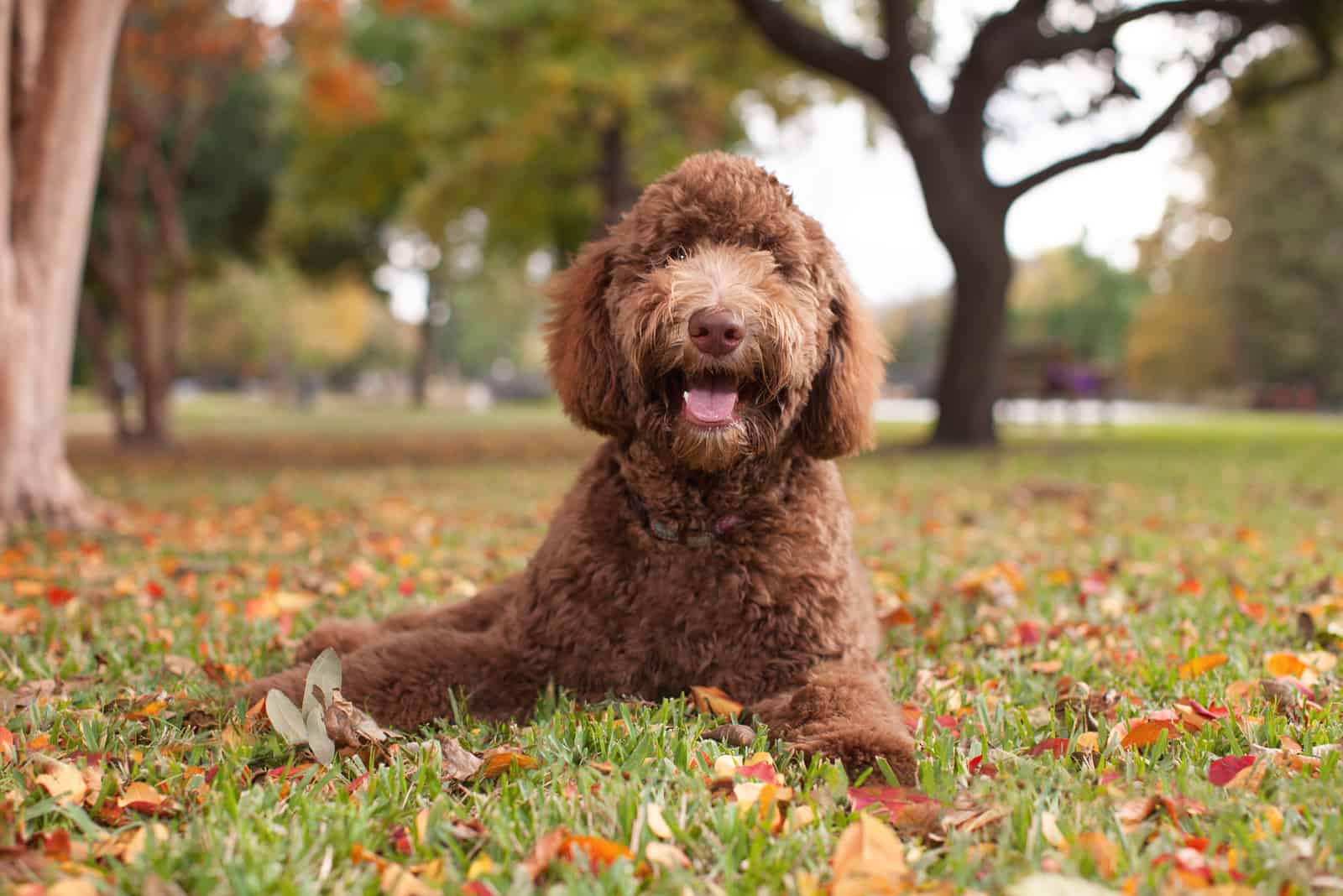
It is challenging to state outright what the price of a F1B Labradoodle is. They are very rare, and breeders can choose to change the price according to their liking.
In general, a Labradoodle can cost anywhere between $500 and $4000. An F1B Labradoodle will usually rank near the upper end of the scale as it is a bit challenging to produce. However, this depends on many things.
Some breeders love to combine champion bloodlines of both Labrador Retrievers and Poodles. This will greatly raise the price, so your Labradoodle might cost as high as $10,000!
Dogs in rare colors will cost you more than dogs that come in standard apricot, gold, cream, brown, and black colors.
The price might also depend on your location and the breed demand. If Labradoodles have suddenly become popular in your city or state, the prices might jump.
Finally, the best location where you can get your Labradoodle at an affordable price is to adopt a dog from a shelter.
There are many dogs being abandoned each year, and some of them are Labradoodles.
However, there is no guarantee that a Labradoodle you’re looking at in a shelter is F1B Labradoodle. Some Labradoodles of different generations might have all the characteristics of an F1B Labradoodle.
This isn’t to say you shouldn’t adopt a Labradoodle from a shelter – quite the opposite. If a dog has all the traits you’re looking for, then go for it! In the end, you’re probably looking for an F1B Labradoodle not because of the label, but because of the characteristics this dog has.
Is F1B Labradoodle Expensive To Keep?
Another cost people need to think about is the cost of taking care of a dog or any other pet. Many times, the cost of upkeep is much higher than the initial purchase cost.
Fortunately, Labradoodles aren’t overly expensive. They are healthy dogs that don’t require many vet visits and interventions.
Also, they don’t require any special dog food, unless there are some health concerns that change this. Most brands from Amazon or Chewy will work great.
Still, it might be a good idea to give them food rich in omega-3 and omega-6 fatty acids. This can ensure their coats are shiny and healthy.
A proper diet is especially important if your pooch sheds, as it can help reduce the number of loose hairs.
In fact, dog grooming is the only out-of-the-ordinary expense you need to consider. As I’ve mentioned before, Labradoodles are prone to tangles and mats. You’ll need a professional groomer to take care of their delicate coats.
FAQs
Are F1B Labradoodles Good Family Pets?
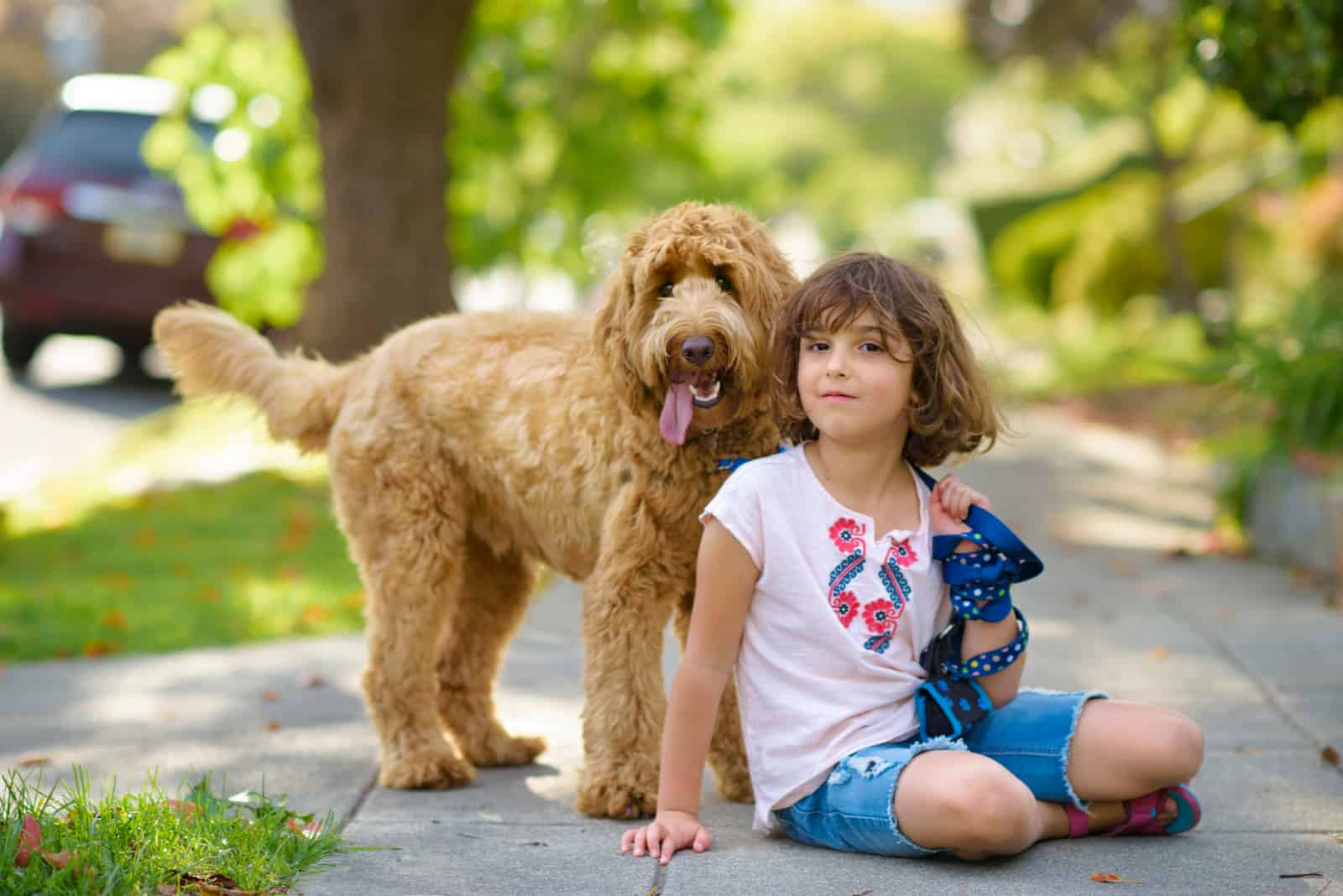
Labradoodles are some of the best family pets you can find. In fact, the main reason why people want a Labradoodle to be a part of their household is that they are looking for a friendly family dog that will be with them all the time.
Labradoodles are friendly and happy, with the ability to cheer everyone up. They look like living stuffed toys, and they often act the part.
They love humans so much that they can be considered clingy. Still, a Labradoodle will never whine or be overly needy like a Dachshund. They’ll ask for attention in a much more elegant way.
They are great with kids, with other pets and dogs, with guests, even with strangers! They don’t have a prey drive, and there’s not a single aggressive bone in their bodies.
They also have a long lifespan, so if you’re looking for a companion for your little ones, you can rest assured you won’t have to explain the rainbow bridge any time soon.
Are F1B Labradoodles Hypoallergenic?
In general, no dog can be considered hypoallergenic. For something, whether that is an object, food, or a pet, to be hypoallergenic, it mustn’t have any allergens.
Many dog owners think that dog hair is causing them issues, but this isn’t exactly the case. The problem lies in a specific type of protein found in the dog’s drool, urine, and dander.
Dander is dead skin flakes. Even humans have it – we just call it dandruff. These skin flakes, together with drool or urine, can get stuck to the dog’s hair, and this is how they’ll spread around, giving the illusion that hairs are bothering you.
All dogs produce dander, drool, and urine, which technically means that there isn’t a dog that will never cause you any issues. Still, if a dog doesn’t shed, this will help.
Fortunately, most F1B Labradoodles are perfectly suitable for people with mild to moderate dog allergies. They don’t produce a lot of dander, they don’t drool, and they are clean dogs that won’t get into their own feces.
Not just that, but most Labradoodles have a curly, Poodle-like coat that will be non-shedding or shed very little. This means your house will be free of dog hairs.
In fact, F1B Labradoodles are the best Labradoodle generation if you’re looking for allergy-friendly dogs. They resemble Poodles a lot, and very few people have reported having allergy symptoms around these dogs.
How Big Will An F1B Labradoodle Get?
I’ve already discussed different Labradoodle sizes and how breeders are attempting to produce dogs that will fit into a specific size range.
The truth is, however, that you can never know for sure how big a mixed breed dog will get. There are many gees that come into play, and nature will always find a way to surprise us.
Still, F1B Labradoodles are fairly predictable, and a breeder can have a good estimation of the size of their puppies.
This doesn’t mean that it’s impossible to get an F1B Labradoodle puppy that comes in a smaller or larger size than anticipated. However, this is less likely to happen than with any other Labradoodle generation.
Is F1 Or F1B Better?
There seems to be an ongoing debate on what is the best Labradoodle generation. While everyone can have their own opinion, I’ll explain why F1B Labradoodles are my personal favorites.
First of all, their appearance is somewhat easy to predict. While there are some hidden, recessive genes that might suddenly just ‘pop up’, the chances of this are much slimmer compared to F1 or even multi-gen Labradoodles.
As they have more Poodle genes, they have a bit lower energy levels than Labradoodles that are 50% Labrador Retrievers. For someone who can’t afford to have many hours of walk a day, having a dog that is a bit laid-back is a great choice.
They are more likely to be hypoallergenic than any other Labradoodle breed. If you’re an allergy sufferer, you’ll be able to benefit from this greatly.
As they are non-shedding, you won’t have to clean your house every day or worry about having dog hairs everywhere.
Still, no matter which generation you choose, all Labradoodles make amazing family pets. As long as you’re mindful of their coat type, you won’t regret buying one – whatever the generation of your new doggie might be.
Read Next: F1b Cockapoo: Is This The Best Generation?
